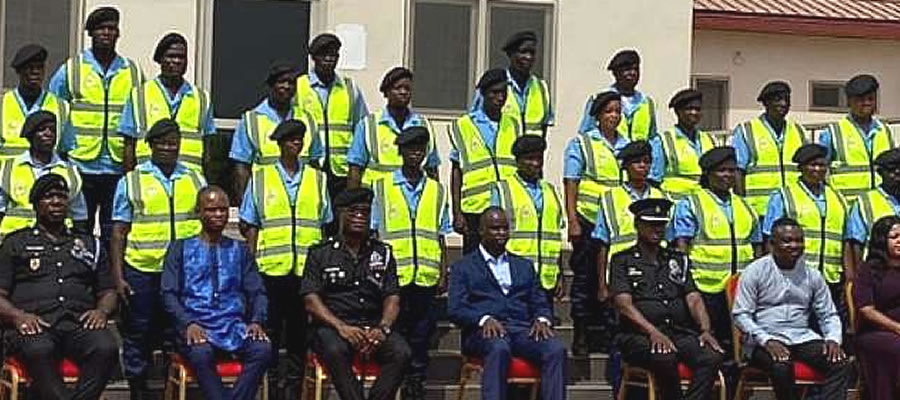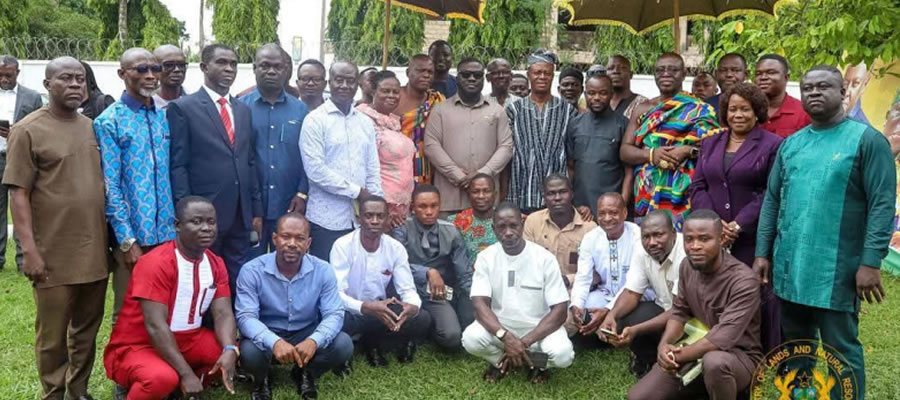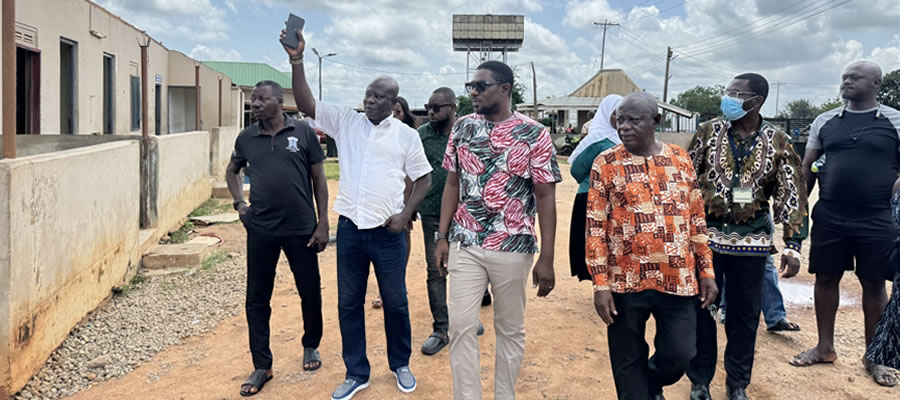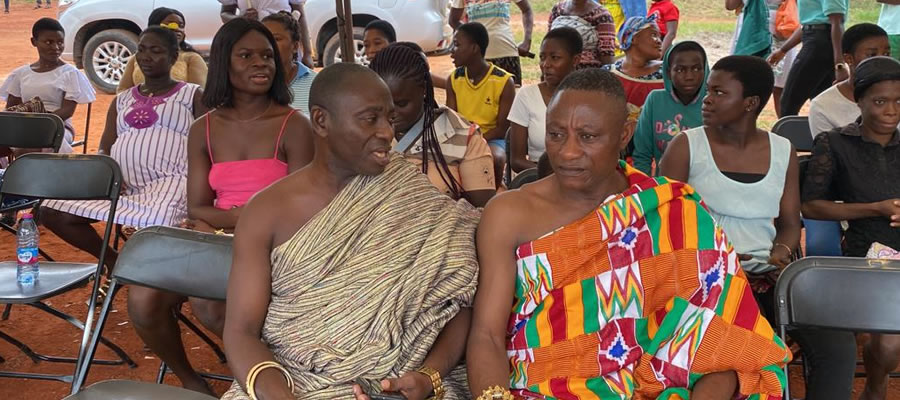

There are one hundred and twenty-five (125) kindergarten/nursery schools, one hundred and thirty-six (136) primary schools, ninety-six (96) Junior High Schools, and four (4) Senior High Schools in the district. One of the Senior Secondary Schools provides technical courses. There are also four (4) Vocational schools and one (1) Theological University in the District. The vocational schools are located at Nerebehi, Sepaase, Maakro and Toase, whiles the university is located at Abuakwa. These public and private educational institutions provide human resources development opportunities for children and youth in the district.
Out of a total of 38 Public Basic Schools in the District, Akropong Area Council has the highest number of 35 Public Basic schools representing 32.2%. The second highest number of Public Basic schools is fund in the Nkawie-Toase Area Council, which recorded 30 schools representing 25.4%.Abuakwa; Akropong and Adankwame have the highest concentration of private pre-schools and basic schools. The Akropong Area Council has no private schools at both the Pre and Basic School levels.
In terms of SSS, the Nkawie-Toase Area Council is leading with two SSS followed by Akropong and Barekese Area Councils which has one SSS each respectively. The rest have none.
At the pre-school level, total enrolment has increased from 5, 364 in 2005 to 10,620 in 2009. Total female enrollment is 51.10%, whiles male enrollment is 48.9%. These results indicate a higher enrollment of girls than boys at the pre-school level. Measures must be put in place to ensure that these girls continue their education to higher levels.
Primary school enrollment has increased significantly from 21,667 in 2005 to 33,345 in 2009. Like the pre-school level, girls’ school enrollment at the primary level is higher than that of boys. Girl-Child educational drive in the district is yielding positive results. Measures must be put in place to sustain this success.
At the JHS level, school enrollment has also increased significantly from 9,532 in 2005 to 13,945 in 2009. However, unlike the pre-school and primary school levels boys’ enrollment is higher than that of girls’ at the JHS level, as shown in table 28. This implies that as they climb the ladder to the top, the girls’ dropout turn to be higher than boys. Management attention and action is needed to resolve the issue so as to ensure the retention of girls in school throughout the education ladder.
The study has revealed that the general school participation rate in the district has increased from 27% in 2005 to 54.2% in 2009 at the pre-school level and from 74.0% in 2006 to 90.8 in 2009 at the basic school level. Participation rates in pre-school for boys and girls are 52.4 % and 56% respectively
At the SSS level, the enrollment situation is still in favour of boys than girls. Out of a total of 5,244 students, 3,469 (66.15 %) are boys and 1,775 (33.85 %) are girls. This indicates that there is high dropout for girls as they climb the ladder. An intervention is therefore necessary to help retain girls in school at all the stages of the educational ladder.
Teaching and School Infrastructure
School infrastructure at the pre-school and basic levels in the district is grossly inadequate. Classrooms and furniture are inadequate, and the existing classrooms are poor. Out of 192 classrooms at the pre-school level, 61 (66.30 %) are poor, and there is a backlog of 124 classrooms. About 3000 children in preschool do not have furniture
A total of 515 primary school classrooms in the District, 299 (58.06 %) are poor while 216 (41.94 %) are good. There is also a backlog of 109 classrooms. For furniture supply, the backlog is 8,416 tables and 8463 chairs at the primary school level. Two primary schools have potable water facilities, and only two have toilet facilities. At the JSS level, there are 393 classrooms existing in the District, out of which, 112 (49.12 %) are in poor condition and 116 (50.88%) are in good condition. The furniture supply is also inadequate; there is a backlog of 3,310 tables and 3,321 chairs.
The classrooms are not only in poor state, but are also inadequate. About 36 classrooms are required to accommodate the current enrollment. Ten Junior Secondary Schools have potable water facilities and only three have toilet facilities. There is the need to increase the supply of water and sanitation facilities in the basic schools. Most JSS pupils in the district do not benefit from the practical component of the pre-technical education. Most of the schools do not have workshops. In schools were these workshops were constructed, their use have be changed into normal classrooms.
For a sustainable growth of the district economy, measures are required to provide practical technical skills to the youths being turned out in our basic and secondary institutions.
At the SSS level, classrooms and dormitories are woefully inadequate with respect to number of students available. An intervention to provide additional classrooms and dormitories is necessary. there is also irregular flow of water supply to the schools. Students often resort to non- potable sources of water supply.
A total of 6,873 teachers are in the pre-school section under public schools whiles 3,687 are in the private schools. The backlog of teachers at the pre-school level is 39. Also untrained teachers formed 18.64 % of the total number of teachers available at pre-school level. The untrained teachers are mainly in the private schools.
The primary school level has 1,577 teachers, out of these 442 (28.03%) are untrained. Abuakwa and Akropong Area Councils have the highest number of untrained teachers. Teachers are not adequate, 59 additional teachers are needed to fill existing vacancies in the district, especially in the Barekese and Adankwame Area Councils.
The JSS level has adequate teachers. However, the presence of high number of untrained teachers still leaves much to be desired. The untrained teachers are 270 (14.48%) out of the total number of 1,864 teachers at the JSS level. Appropriate intervention is therefore needed to reduce the supply of untrained teachers in the District.
The average performance of students of the District in the BECE is about 83.4%. Efforts are therefore needed to raise the performance level, especially in Nkawie and Afari Area Councils.
Challenges
Key problems affecting improved educational standard in the district include inadequate supply of infrastructure, inadequate logistics, inadequate supervision in schools, inadequate trained teachers.
Date Created : 11/24/2017 5:15:27 AM












 facebook
facebook
 twitter
twitter
 Youtube
Youtube
 +233 593 831 280
+233 593 831 280 0800 430 430
0800 430 430 GPS: GE-231-4383
GPS: GE-231-4383 info@ghanadistricts.com
info@ghanadistricts.com Box GP1044, Accra, Ghana
Box GP1044, Accra, Ghana